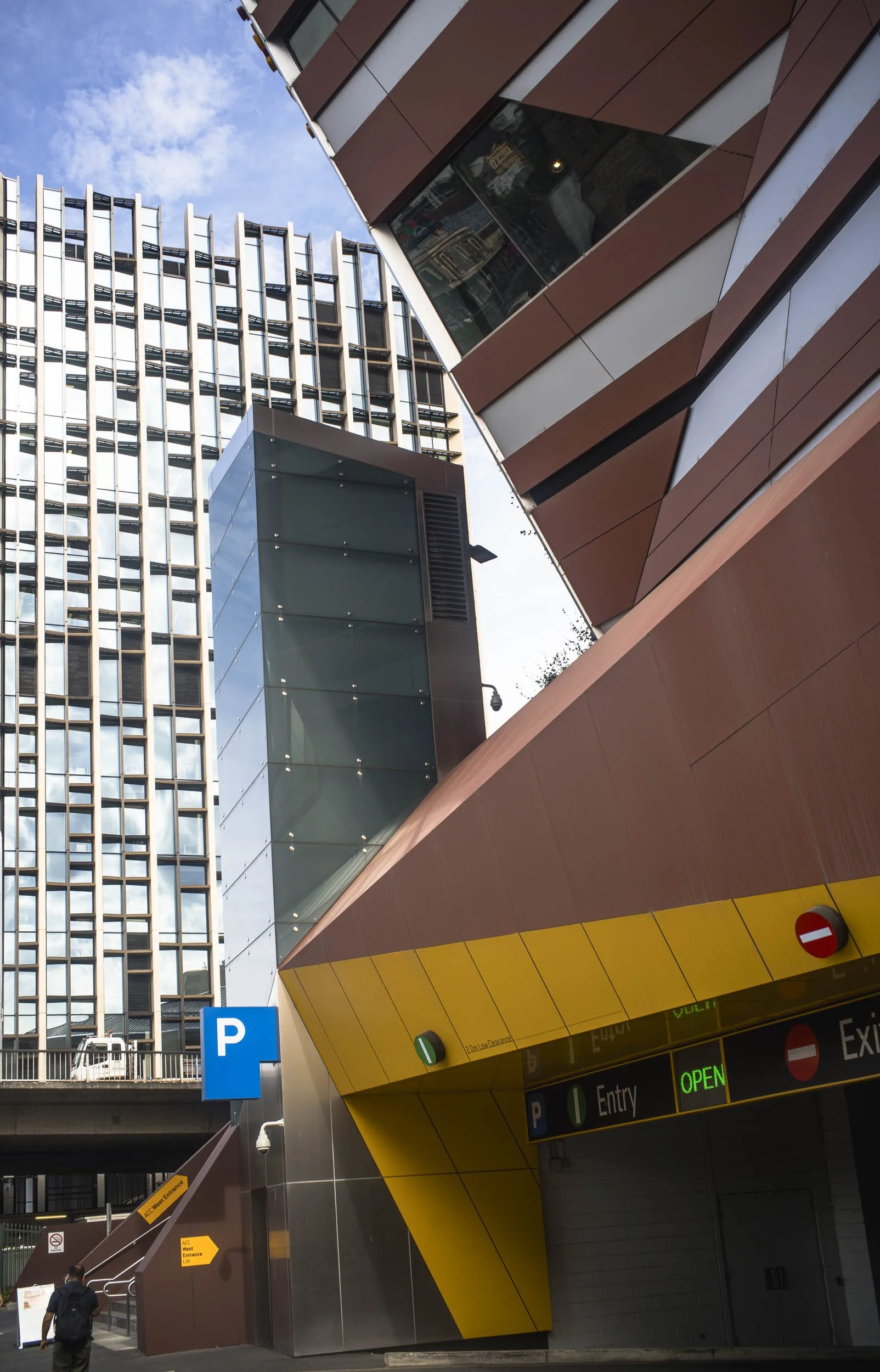Becoming familiar
Staying at the Kate Court cottage these last couple of days has allowed me to walk the straight streets in Adelaide’s CBD’s (it’s a grid) in both the early morning and the late afternoon. The cottage is in the south-east corner of the CBD and I can easily walk into the CBD. What I’ve begun to realize as I wander/stroll around is that I am no longer familiar with the cityscape or its streets.
I’m a stranger in a city that I used to know intimately when I was living in the CBD near the Central Market in the early part of the second decade of the 21st century.
Nth Terrace, 2018.
I was quite disoriented as I was walking around. I was trying to reconnect with the past by returning to the familiar locations from the past, but I cannot reconnect. It feels like I am standing in a dead space staring at a cityscape, and that I am just repeating myself.
I ask myself: ’why am I trying to reconnect this way in terms of making photographs’? I tell myself that ‘things have changed in this urban form of metropolitan capitalist modernity and that a new approach is needed’. But how to do this?
What concerned me then were the empty streets and the juxtaposition and the confrontation of the old and the new architecture. This history of the present was the process of the transition of Adelaide as a linear city from being an old industrial city in capitalist modernity to a post-industrial one. This change could be seen clearly in its architecture, which, in turn, provided insights into the rationality of urban design and planning. The “new” that motivates the constant destruction and reconstruction of the cityscape leaves its traces, monuments, ruins and rubble of the past and of the present in and on the street.
Contemporary Adelaide is a post industrial city — there are just pockets of the grungy, industrial city left. I can’t keep on being the ragpicker looking for the traces of industrial modernity, or possible crime scenes in the dirty, old alleyways. The new Adelaide is built on the destruction of the old Adelaide.
old + new, Austin St, 2018
Though the earlier concern opened up a space for photography in relation to the cityscape I really have to start again, whilst retaining the concept of the cityscape; the figure of the flâneur in the city as one who finds refuge in anonymity and is the producer of texts and images; the transient character of urban modernity (constant newness); and the photograph as a fragment of knowledge. We walk the city, we interpret the city and we read texts about the city [eg., David Frisby’s Fragments of Modernity, (1985) and Streetscapes of Modernity: Critical Explorations (2001)].
The emphasis is upon the transformation of the flâneur into the photographer in contrast to the sociologist who reveals the conflicting dimensions of social life and the way the study of streets is a key to the metropolis as a sociological riddle. Historically photography plays a crucial role in understanding fragmentary modern experience (the snapshot in contrast to the panorama).
Cityscape: the modernist new, 2018
Adelaide is becoming a different city and the city’s society is also changing. There are now a lot more people living in the city and the little bars have sprung up in a number of locations that used to be just a walk through space. The new forms of urban culture and social interaction suggest that Adelaide’s CBD is becoming more of a pedestrian city. Is it recovering its roots as a 19th century, pedestrian capital city by displacing the car as the centre of urban existence?
What the historical changes signify is that the cityscape is a commodity. The metropolitan street, with its fleeting and fortuitous impressions, as the surface of capitalist modernity is the terrain of photography; whilst what lies beneath the surface -the rational ordering by the money economy, the commodity form, and the ever-same reproduction of exchange values of capitalism - is the terrain of social science.



